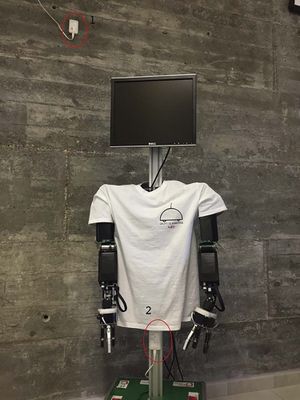Difference between revisions of "Benchmark dataset for training/testing of Machine Learning Models to detect cyber-attacks to an indoor real time localization system for autonomous robots"
(Created page with "This data report summarizes a benchmark dataset which can be used to analyze cyber-attacks to an indoor real time localization system for autonomous robots. Data have been gat...") |
(No difference)
|
Revision as of 09:51, 11 October 2017
This data report summarizes a benchmark dataset which can be used to analyze cyber-attacks to an indoor real time localization system for autonomous robots. Data have been gathered in an indoor mock-up apartment, shown in Fig 2 , located at the Robotics Lab of the University of León (Spain). An autonomous robot, called Karen and shown in Fig 1, with an on-board Real Time Location System (RTLS) was used to gather the data.
Further information can be found at: Guerrero-Higueras, Á. M., DeCastro-García, N., Rodríguez-Lera, F. J., & Matellán, V. (2017). Empirical analysis of cyber-attacks to an indoor real time localization system for autonomous robots. Computers & Security, 70, 422-435.
Materials
Data gathered by Karen robot include:
- Karen location estimates provided by a commercial RTLS, called KIO.
Additional information about Karen and the devices/packages used to get data is given below.
Karen robot
Fig. 1 shows the autonomous robot Karen, used in the experiments. Karen is a mobile manipulator built by the Robotics Group of the Universidad de León (Spain). It has two arms with 7 degrees of freedom, 3 fingers each, and a mobile base. The control of the robot is based on the Robot Operating System (ROS) framework.
KIO RTLS
KIO RTLS commercial solution by Eliko has been used to provide people location at the study area. Fig 1 shows a KIO beacon (1), and a KIO tag on the robot (2).
